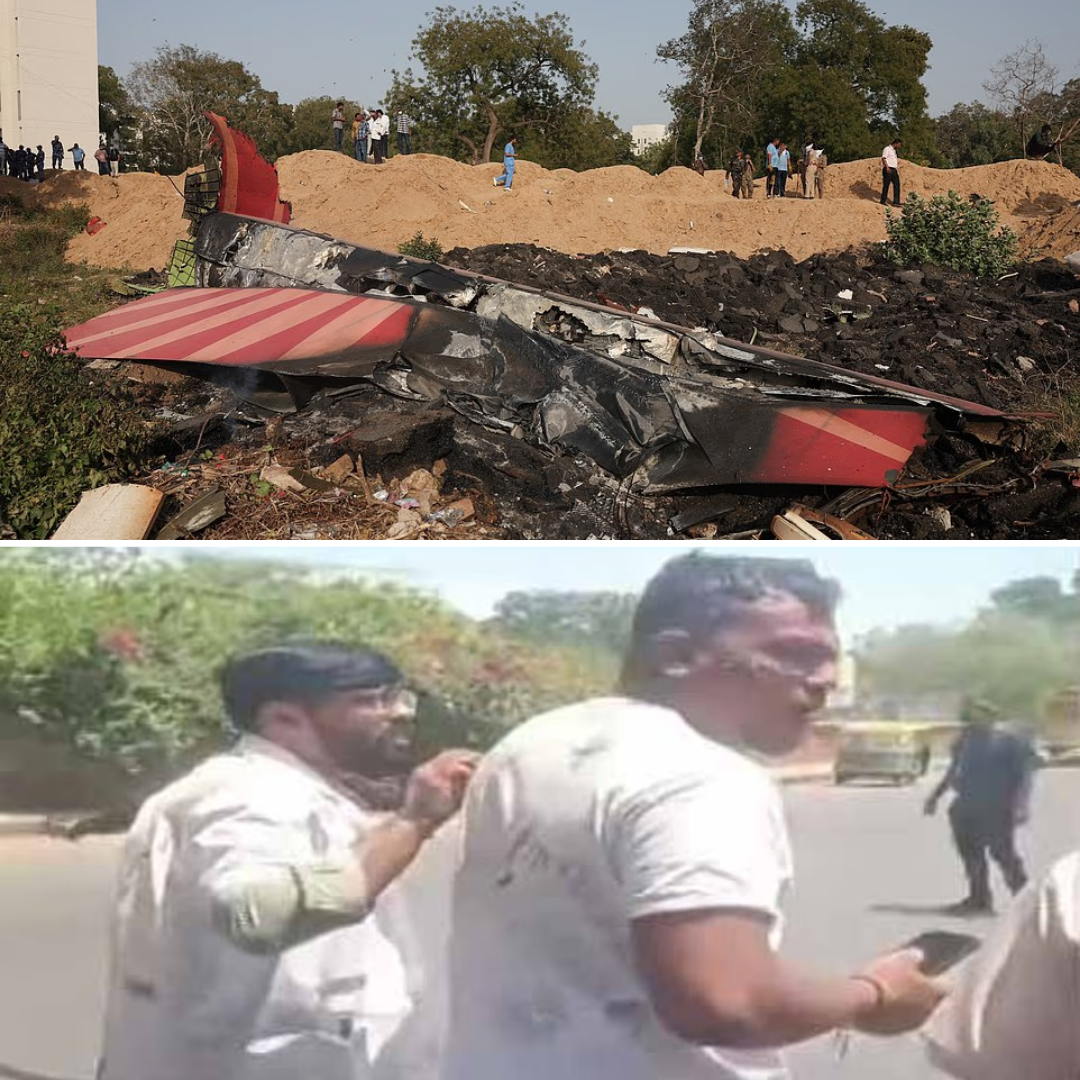Sole Survivor of Air India Crash: A Miraculous Escape from Fiery Wreckage
On June 12, 2025, the world was struck by tragedy when Air India Flight AI171, a Boeing 787 Dreamliner bound for London, crashed moments after takeoff from Ahmedabad, India, killing 241 of the 242 people on board and dozens more on the ground. Amid the smoldering wreckage, one man emerged, defying all odds: Vishwash Kumar Ramesh, a 38-year-old British national of Indian origin. Footage of Ramesh limping away from the crash site, bloodied but alive, has captivated the globe, with his own words, “I don’t know how I’m alive,” echoing the disbelief of millions. This article delves into the extraordinary story of his survival, the circumstances of the crash, and the broader implications, drawing on objective insights from web sources to provide a comprehensive account of an event dubbed the “miracle of seat 11A.”

The Crash: A Catastrophe Unfolds
Flight AI171 took off from Sardar Vallabhbhai Patel International Airport in Ahmedabad, Gujarat, at 1:39 PM local time, carrying 230 passengers and 12 crew members. The passenger manifest included 169 Indian nationals, 53 Britons, seven Portuguese, and one Canadian, among them 11 children, including two newborns. Just 30 seconds after takeoff, a loud noise signaled disaster. The plane, reaching only 825 feet, issued a mayday call before plunging into a residential area, crashing into a medical college dormitory and a dining hall at BJ Medical College and Civil Hospital. The impact unleashed a massive fireball, with plumes of black smoke visible for miles, as captured in videos verified by NBC News.
The wreckage was catastrophic. The plane’s tail lodged into a building, parts of the fuselage smashed through a canteen, and debris scattered across roads and residential complexes. Firefighters battled to douse charred remains, while rescuers recovered over 265 bodies, including at least five medical students and dozens of local residents, with DNA testing needed to confirm the final toll. The crash, one of India’s worst aviation disasters, claimed all but one life on board, making Ramesh’s survival a statistical anomaly.
Vishwash Kumar Ramesh: The Sole Survivor
Vishwash Kumar Ramesh, seated in 11A next to an emergency exit just behind business class, became the sole survivor of Flight AI171. A British citizen born in India, Ramesh, 38, has lived in Leicester, England, since 2003 with his wife and four-year-old son. He was returning from a family visit in Diu, a coastal town in India, accompanied by his brother Ajay, who was seated in a different row and is presumed among the deceased. Ramesh’s miraculous escape was captured in a viral video shared by India Today, showing him limping toward an ambulance, his white shirt bloodstained, blood matted in his hair, and a dazed expression on his face.
Speaking from his hospital bed to the Hindustan Times, Ramesh recounted the harrowing moments: “Thirty seconds after takeoff, there was a loud noise and then the plane crashed. It all happened so quickly. When I got up, there were bodies all around me. I was scared. I stood up and ran. There were pieces of the plane all around me. Someone grabbed hold of me and put me in an ambulance.” Police reports indicate Ramesh jumped out of the emergency exit, a critical factor in his survival, as his seat’s proximity allowed rapid escape before the plane erupted in flames.
Dr. Dhaval Gameti, who treated Ramesh at Ahmedabad Civil Hospital, described him as “disoriented, with multiple injuries all over his body,” including bruises on his arms, face, chest, and feet, but noted he was “out of danger.” Dr. Rajnish Patel, head of surgery, added that Ramesh’s condition was “not very critical,” with a possible release within days. Despite physical stability, Ramesh is “psychologically disturbed,” grappling with the trauma of surviving a crash that claimed his brother and 240 others.
The Miracle of Seat 11A
Ramesh’s survival is extraordinary, not only for its rarity but for the circumstances that enabled it. Seat 11A, located at an emergency exit row just in front of the plane’s left wing, offered a unique advantage. Aviation experts suggest that proximity to an exit, combined with the plane’s low altitude of 625-825 feet, allowed Ramesh to escape before the full impact and explosion. Flightradar24 data shows the plane’s transponder signal dropped seconds after takeoff, indicating a rapid descent, possibly due to a “steep nose-down trajectory or stall event,” as noted by expert John Davidson.
The Daily Telegraph and Daily Star dubbed Ramesh’s escape the “miracle of seat 11A,” a sentiment echoed in headlines from The Sun and Daily Mirror. His boarding pass, shared with reporters and circled to highlight seat 11A, became a symbol of his improbable luck. Social media posts on X, such as one from @themojostory, captured the awe: “First miracle survivor… Vishwas Kumar Ramesh… seen walking away from the site of the tragedy.” Another from @GaroweOnline noted his minor injuries and ability to walk unaided, underscoring the astonishing nature of his survival.
Historical parallels exist, though rare. The 1989 United Airlines Flight 232 crash saw 112 survivors due to a controlled landing, but single-survivor cases, like the 1971 Juliane Koepcke incident in Peru, are exceptional. Ramesh’s case, where one person walked away from a crash killing 241 others on board and dozens on the ground, is statistically extraordinary, as noted by Newsweek.
The Human Toll and Community Response
The crash’s devastation extended beyond the plane. The medical college dormitory, home to students and staff, suffered significant losses, with at least five students killed and 50 injured. A residential complex nearby, housing doctors’ families, was also hit, with fears of a higher ground toll. Indian Prime Minister Narendra Modi, a Gujarat native, called the crash “heartbreaking beyond words,”





